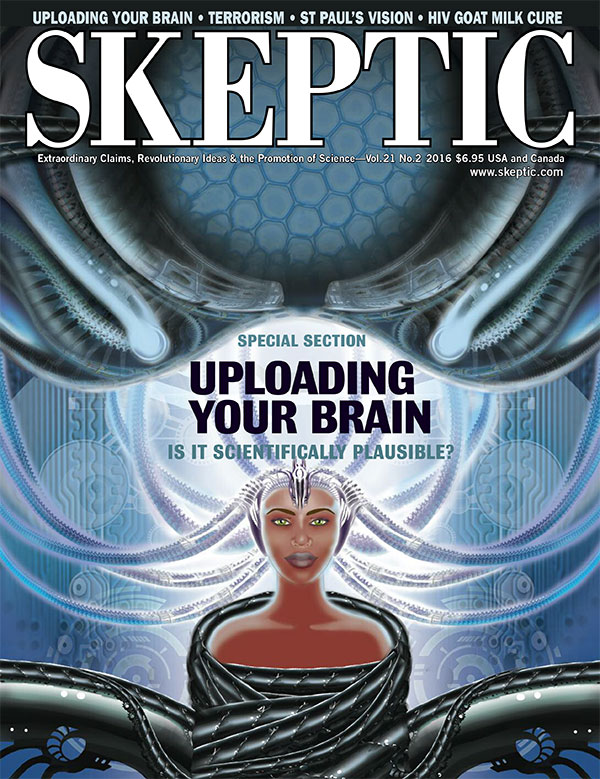The Conceptual Penis as a Social Construct: A Sokal-Style Hoax on Gender Studies
and James Lindsay, Ph.D. (aka, Jamie Lindsay, Ph.D.) | Comments (261)
Note from the editor: Every once in awhile it is necessary and desirable to expose extreme ideologies for what they are by carrying out their arguments and rhetoric to their logical and absurd conclusion, which is why we are proud to publish this expose of a hoaxed article published in a peer-reviewed journal today. Its ramifications are unknown but one hopes it will help rein in extremism in this and related areas.
—Michael Shermer
“The conceptual penis as a social construct” is a Sokal-style hoax on gender studies. Follow the authors @peterboghossian and @GodDoesnt.
The Hoax
The androcentric scientific and meta-scientific evidence that the penis is the male reproductive organ is considered overwhelming and largely uncontroversial.
That’s how we began. We used this preposterous sentence to open a “paper” consisting of 3,000 words of utter nonsense posing as academic scholarship. Then a peer-reviewed academic journal in the social sciences accepted and published it.
This paper should never have been published. Titled, “The Conceptual Penis as a Social Construct,” our paper “argues” that “The penis vis-à-vis maleness is an incoherent construct. We argue that the conceptual penis is better understood not as an anatomical organ but as a gender-performative, highly fluid social construct.” As if to prove philosopher David Hume’s claim that there is a deep gap between what is and what ought to be, our should-never-have-been-published paper was published in the open-access (meaning that articles are freely accessible and not behind a paywall), peer-reviewed journal Cogent Social Sciences. (In case the PDF is removed, we’ve archived it.)
Assuming the pen names “Jamie Lindsay” and “Peter Boyle,” and writing for the fictitious “Southeast Independent Social Research Group,” we wrote an absurd paper loosely composed in the style of post-structuralist discursive gender theory. The paper was ridiculous by intention, essentially arguing that penises shouldn’t be thought of as male genital organs but as damaging social constructions. We made no attempt to find out what “post-structuralist discursive gender theory” actually means. We assumed that if we were merely clear in our moral implications that maleness is intrinsically bad and that the penis is somehow at the root of it, we could CONTINUE READING THIS POST…
TAGS: hoax, nonsense, peer review, scienceeSkeptic for May 17, 2017
In this week’s eSkeptic:
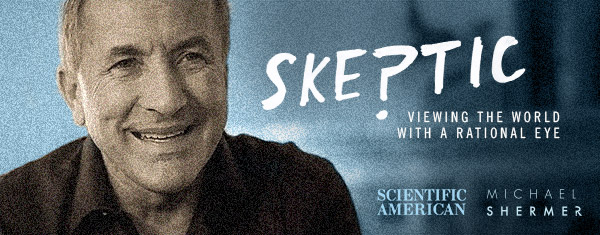
SCIENTIFIC AMERICAN “SKEPTIC” COLUMN FOR MAY 2017
On Witches and Terrorists: Why Torture Doesn’t Work
As recounted by author and journalist Daniel P. Mannix, during the European witch craze the Duke of Brunswick in Germany invited two Jesuit scholars to oversee the Inquisition’s use of torture to extract information from accused witches. “The Inquisitors are doing their duty. They are arresting only people who have been implicated by the confession of other witches,” the Jesuits re ported. The duke was skeptical. Suspecting that people will say anything to stop the pain, he invited the Jesuits to join him at the local dungeon to witness a woman being stretched on a rack. “Now, woman, you are a confessed witch,” he began. “I suspect these two men of being warlocks. What do you say? Another turn of the rack, executioners.” The Jesuits couldn’t believe what they heard next. “No, no!” the woman groaned. “You are quite right. I have often seen them at the Sabbat. They can turn themselves into goats, wolves and other animals…. Several witches have had children by them. One woman even had eight children whom these men fathered. The children had heads like toads and legs like spiders.” Turning to the flabbergasted Jesuits, the duke inquired, “Shall I put you to the torture until you confess?”

One of these Jesuits was Friedrich Spee, who responded to this poignant experiment on the psychology of torture by publishing a book in 1631 entitled Cautio Criminalis, which played a role in bringing about the end of the witch mania and demonstrating why torture as a tool to obtain useful information doesn’t work. This is why, in addition to its inhumane elements, it is banned in all Western nations, including the U.S., whose Eighth Amendment of the Constitution prohibits “cruel and unusual punishments.” […]

Houdini’s Final Incredible Secret
SKEPTICALITY EPISODE 285
In this episode of Skepticality, Derek talks with Bob Loomis, librarian at the Magic Circle, and scholar of the history of stage illusion. His latest work is the book Houdini’s Final Incredible Secret: How Houdini Mystified Sherlock Holmes’ Creator, which is a detailed account of Bob’s obsession with figuring out how one trick was performed.
Get the Skepticality App — the Official Podcast App of Skeptic Magazine — so you can enjoy your science fix and engaging interviews on the go! Available for iOS, Android, and Windows.
Spooky Geology
MONSTERTALK EPISODE 128
In this episode, MonsterTalk welcomes back notable skeptic, scientist, researcher and author (and now Podcaster) Sharon Hill. Sharon’s got a new podcast (15 Credibility Street), new science blog (Spooky Geology), and a book coming out later this year. In this discussion we talk about skepticism, science communication and the mysterious phenomena known as The Stone Tape theory of repetitive hauntings.

Jill Greeley (played by Jane Asher) in the The Stone Tape, a 1972 BBC drama by Nigel Kneale. In the movie, Jill can hear sounds and see the apparition of a young woman who apparently had fallen to her death here in the past. Read more about this story.
Get the MonsterTalk Podcast App and enjoy the science show about monsters on your handheld devices! Available for iOS, Android, and Windows. Subscribe to MonsterTalk for free on iTunes.
SCIENCE SALON #13: JUNE 11 @ 2PM
Dr. Walter Scheidel —The Great Leveler: Violence and the History of Inequality from the Stone Age to the 21st Century

Are mass violence and catastrophes the only forces that can seriously decrease economic inequality? To judge by thousands of years of history, the answer is yes. Tracing the global history of inequality from the Stone Age to today, the Stanford University historian Walter Scheidel shows that inequality never dies peacefully. Inequality declines when carnage and disaster strike and increases when peace and stability return. The Great Leveler is the first book to chart the crucial role of violent shocks in reducing inequality over the full sweep of human history around the world…
Reserve your seat(s) online or by calling 1-626-794-3119. Online reservation closes Sunday June 11, 2017 at 11am PDT.
Derren Brown — Magic, Happiness, and Skepticism
In this remote Science Salon, Michael Shermer talks with Derren Brown, a British magician and writer.
His TV show Derren Brown: Mind Control received immediate success after airing in 2000. His specials include Russian Roulette, Seance, The Heist, Hero at 30,000 Feet, How to Predict the Lottery, and Apocalypse. His live shows Something Wicked This Way Comes and Svengali have won him two Olivier Awards. He garnered the 2012 BAFTA for Best Entertainment for Derren Brown: The Experiments. He has also penned the books Tricks of the Mind and Confessions of a Conjuror, which have sold over 700,000 copies worldwide.
His latest book is Happy: Why More or Less Everything is Absolutely Fine. Derren is currently in the US for his off-Broadway show Secret (April 21st – June 25th, 2017), which has already sold out and has been extended with additional dates.
Derren Brown makes his American theatrical debut in this world premiere production at Atlantic Theater Company. New York audiences can experience Derren’s unique blend of mind-reading, suggestion and psychological illusion in a brand new theatrical experience.
TAGS: happiness, magic, Science Salon, The Michael Shermer ShoweSkeptic for May, 2017
In this week’s eSkeptic:
Big News on Homo naledi
More Fossils and a Surprising Young Age
by Nathan H. Lents, Ph.D.
In September of 2015, scientists at the University of Witwatersrand, led by Dr. Lee Berger, made a bombshell announcement. Not only had a new species of hominin been discovered, but the find contained more than 1500 fossils from at least 15 individuals. The remains were found all in one place, a deep dark cave in South Africa. This was, by far, the largest number of fossils ever found in one place in the history of paleoanthropology. In one fell swoop, Homo naledi went from being completely unknown to science to being one of the most fully described hominins ever. Although no age was given to the fossils at the time, speculation was rampant.
We now have an essentially complete skeleton that harbors an interesting but confusing mosaic of primitive and derived characteristics.
Over the last few months, the paleoanthropology community has been abuzz with rumors that more H. naledi fossils had been found and that the age of the fossils had been determined. On May 9th, a large team of scientists, again led by Berger, confirmed the rumors and made two big announcements regarding this enigmatic species. First, a second cave had been found harboring more H. naledi skeletal remains. Second, and even more dramatically, the dating effort from the original fossil find revealed that the fossils are much younger than previously thought, a mere 300,000 years old.
The results are released in three papers in the journal eLife, published by the Howard Hughes Medical Institute, which was also the venue for the first publication of Homo naledi in 2015. Both of these announcements have astounding and far-reaching implications. A couple days before the press conference, I caught up with Lee Berger to ask him what all this means. […]
MISSED SCIENCE SALON # 11?
Watch the recording for free, right here
Why do we catch colds? What causes seasons to change? And if you fire a bullet from a gun and drop one from your hand, which bullet hits the ground first? In a pinch we almost always get these questions wrong. Worse, we regularly misconstrue fundamental qualities of the world around us. So, how do we get the world right? Find out by watching Science Salon # 11, featuring Dr. Andrew Shtulman.
SCIENCE SALON #13: JUNE 11 @ 2PM
Dr. Walter Scheidel —The Great Leveler: Violence and the History of Inequality from the Stone Age to the 21st Century

Are mass violence and catastrophes the only forces that can seriously decrease economic inequality? To judge by thousands of years of history, the answer is yes. Tracing the global history of inequality from the Stone Age to today, the Stanford University historian Walter Scheidel shows that inequality never dies peacefully. Inequality declines when carnage and disaster strike and increases when peace and stability return. The Great Leveler is the first book to chart the crucial role of violent shocks in reducing inequality over the full sweep of human history around the world…
Call 1-626-794-3119 to reserve your seats.
Big News on Homo naledi:
More Fossils and a Surprising Young Age
In September of 2015, scientists at the University of Witwatersrand, led by Dr. Lee Berger, made a bombshell announcement. Not only had a new species of hominin been discovered, but the find contained more than 1500 fossils from at least 15 individuals. The remains were found all in one place, a deep dark cave in South Africa. This was, by far, the largest number of fossils ever found in one place in the history of paleoanthropology. In one fell swoop, Homo naledi went from being completely unknown to science to being one of the most fully described hominins ever. Although no age was given to the fossils at the time, speculation was rampant.
Over the last few months, the paleoanthropology community has been abuzz with rumors that more H. naledi fossils had been found and that the age of the fossils had been determined. On May 9th, a large team of scientists, again led by Berger, confirmed the rumors and made two big announcements regarding this enigmatic species. First, a second cave had been found harboring more H. naledi skeletal remains. Second, and even more dramatically, the dating effort from the original fossil find revealed that the fossils are much younger than previously thought, a mere 300,000 years old.
The results are released in three papers in the journal eLife, published by the Howard Hughes Medical Institute, which was also the venue for the first publication of Homo naledi in 2015. Both of these announcements have astounding and far-reaching implications. A couple days before the press conference, I caught up with Lee Berger to ask him what all this means.
The Second Cave
The second cavern, called the Lesedi chamber, is a mere 80 lateral meters from the now-famous Dinaledi chamber, which housed the treasure trove of fossils announced in 2015. That find remains the largest hominin discovery in history with enough fossils to nearly recreate the entire skeleton. Both the Dinaledi and Lesedi chambers are within the Rising Star cave system in the UNESCO World Heritage Site called The Cradle of Humanity.

The Lesedi chamber. (Illustration by Pat Linse, adapted from a drawing on washington.edu.) Click image to enlarge.
The Lesedi chamber contains fewer fossils than were in Dinaledi. However, while the Dinaledi fossils were all mixed in together, Lesedi harbored CONTINUE READING THIS POST…
TAGS: fossils, Homo naledi, paleoanthropologyeSkeptic for May 3, 2017
In this week’s eSkeptic:
Monster Trek: The Obsessive Search for Bigfoot
MONSTERTALK EPISODE 127
In this episode of MonsterTalk Blake Smith interviews Joe Gisondi, author of Monster Trek: The Obsessive Search for Bigfoot. A journalism professor takes us on a first-hand tour of Bigfoot Hunter culture.

Get the MonsterTalk Podcast App and enjoy the science show about monsters on your handheld devices! Available for iOS, Android, and Windows devices. Subscribe to MonsterTalk for free on iTunes.
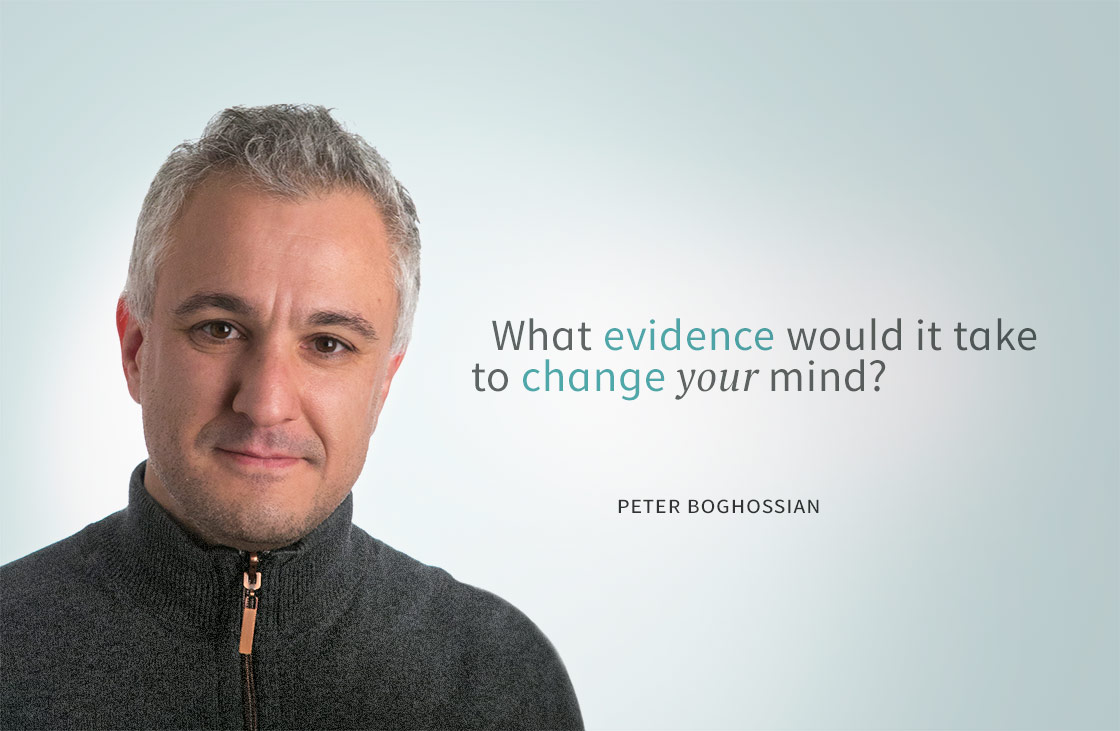
What Would it Take to Change Your Mind?
by Peter Boghossian
I’ve been writing about and teaching critical thinking for more than two decades. “Form beliefs on the basis of the evidence,” was my mantra, and I taught tens of thousands of students how to do just that. Why, then did people leave my classroom with the same preposterous beliefs as when they entered—from alternative medicine to alien abductions to Obama being a Muslim? Because I had been doing it wrong.
The problem is that everyone thinks they form their beliefs on the basis of evidence. That’s one of the issues, for example, with fake news. Whether it’s Facebook, Twitter, or just surfing Google, people read and share stories either that they want to believe or that comport with what they already believe—then they point to those stories as evidence for their beliefs. Beliefs are used as evidence for beliefs, with fake news just providing fodder.
Teaching people to formulate beliefs on the basis of evidence may, ironically, trap them in false views of reality. Doing so increases their confidence in the truth of a belief because they think they’re believing as good critical thinkers would, but they’re actually digging themselves into a cognitive sinkhole. The more intelligent one is, the deeper the hole. As Michael Shermer famously stated, “Smarter people are better at rationalizing bad ideas.” That is, smarter people are better at making inferences and using data to support their belief, independent of the truth of that belief. What, then, can we skeptics do? Here’s my recommendation…
SCIENCE SALON #13: JUNE 11 @ 2PM
Dr. Walter Scheidel —The Great Leveler: Violence and the History of Inequality from the Stone Age to the 21st Century

Are mass violence and catastrophes the only forces that can seriously decrease economic inequality? To judge by thousands of years of history, the answer is yes. Tracing the global history of inequality from the Stone Age to today, the Stanford University historian Walter Scheidel shows that inequality never dies peacefully. Inequality declines when carnage and disaster strike and increases when peace and stability return. The Great Leveler is the first book to chart the crucial role of violent shocks in reducing inequality over the full sweep of human history around the world…
Call 1-626-794-3119 to reserve your seats.
eSkeptic for April 26, 2017
In this week’s eSkeptic:
MARCH FOR SCIENCE
Science Makes America Great
Read and watch Michael Shermer’s live address at Pershing Square, LA at the March for Science, which took place on April 22, 2017. Michael urged President Donald Trump to consider the vital role science plays in our lives.
CAROL TAVRIS
Why Don’t Politicians Apologize?
Kennedy’s apology worked for him, so why are so many politicians scared of admitting they’re wrong? These clips appeared in Science Salon #10, with Dr. Carol Tavris, based on her book Mistakes Were Made (But Not by Me).
Stay informed and get more free science and skepticism video content by subscribing to Skeptic’s YouTube Channel.
SCIENCE SALON #13: JUNE 11 @ 2PM
Dr. Walter Scheidel — The Great Leveler: Violence and the History of Inequality from the Stone Age to the 21st Century

Are mass violence and catastrophes the only forces that can seriously decrease economic inequality? To judge by thousands of years of history, the answer is yes. Tracing the global history of inequality from the Stone Age to today, the Stanford University historian Walter Scheidel shows that inequality never dies peacefully. Inequality declines when carnage and disaster strike and increases when peace and stability return. The Great Leveler is the first book to chart the crucial role of violent shocks in reducing inequality over the full sweep of human history around the world.
Ever since humans began to farm, herd livestock, and pass on their assets to future generations, economic inequality has been a defining feature of civilization. Over thousands of years, only violent events have significantly lessened inequality. The “Four Horsemen” of leveling—mass-mobilization warfare, transformative revolutions, state collapse, and catastrophic plagues—have repeatedly destroyed the fortunes of the rich. Scheidel identifies and examines these processes, from the crises of the earliest civilizations to the cataclysmic world wars and communist revolutions of the twentieth century. Today, the violence that reduced inequality in the past seems to have diminished, and that is a good thing. But it casts serious doubt on the prospects for a more equal future.
An essential contribution to the debate about inequality, The Great Leveler provides important new insights about why inequality is so persistent—and why it is unlikely to decline anytime soon.
Order The Great Leveler from Amazon.
Call 1-626-794-3119 to reserve your seats.
SKEPTICISM 101 RESOURCE
The Baloney Detection Kit Sandwich (Infographic)
For a class project, 11th grade physics students Deanna and Skylar (High Tech High Media Arts, San Diego, CA) created a one-page infographic inspired by Michael Shermer’s Baloney Detection Kit: a 16-page booklet designed to hone your critical thinking skills. The booklet includes suggestions on what questions to ask, what traps to avoid, specific examples of how the scientific method is used to test pseudoscience and paranormal claims, and a how-to guide for developing a class in critical thinking.

In last week’s eSkeptic, we published the cognitive psychologist Diane Halpern’s critique of Charles Murray and Richard Herrnstein’s book The Bell Curve: Intelligence and Class Structure in American Life. Dr. Halpern is one of the world’s leading scientists in the study of cognitive differences, including both race and gender, and she herself has encountered controversy for just daring to study the subject.
In this week’s eSkeptic, we republish the late U.C. Berkeley anthropologist Vince Sarich’s article, “In Defense of The Bell Curve: The Reality of Race and the Importance of Human Differences.” Sarich was also a very controversial scientist for his research on race and group differences, from which he never backed down.
At Skeptic magazine, there are no sacred cows, no ideas too hot to touch. It is our belief that truth will win out in the bright light of open discussion, debate, and disputation. After reading both articles, judge for yourself how to think about the bell curve.
In Defense of the Bell Curve:
The Reality of Race and the Importance of Human Differences
by Vincent M. Sarich
The Bell Curve and the many commentaries on it have brought several issues into an often uncomfortably sharp focus. Though race is by no means the most important of these, the historical baggage the term carries and the reality it symbolizes, require us to get past it before we are able to deal with more substantive matters. Yet that same baggage and those same realities often raise emotional barriers so powerful that they defy facts, reason, and logic.
Many commentators would have us believe that The Bell Curve is obsessed with race, and thereby provide a prime exemplar of pots, kettles, and blackness, evidenced in the following quote from the sociologist Alan Wolfe: “Murray and Herrnstein may not be racists, but they are obsessed by race. They see the world in group terms and must have data on group membership.” This is an interesting charge, says Charles Krauthammer (1994), “given the fact that for the last two decades it is the very liberals who so vehemently denounce Murray who have been obsessed by race, insisting that every institution—universities, fire departments, Alaskan canneries—must have data on group membership.”
We can begin this trip out of political correctness by noting that on genetic grounds alone there can be no doubt of the existence of a substantial number of human races. Races are, if you wish, fuzzy sets.
It is the liberals who have oppressively insisted that we measure ethnic “over-” and “underrepresentation” in every possible field of human endeavor. Here is a liberal establishment forcing racial testing for every conceivable activity, and when a study comes along which does exactly that for SATs and IQ, the authors are pilloried for being obsessed by race.
No one who has actually read The Bell Curve could honestly document any such obsession. But, by the same token, no one even moderately conversant with the American society of the last 20 to 30 years could deny the accuracy of Krauthammer’s assertion that “it is the very liberals who so vehemently denounce Murray who have been obsessed by race.”
Further, it is these “very liberals” who deny that there is any significant genetic, biological, and evolutionary substance to race, and argue that it is, in effect, nothing more than a social and cultural construct. This view is epitomized in a recent story in Time (January 16, 1995), that carries the subtitle: “A landmark global study flattens The Bell Curve, proving that racial differences are only skin deep.” The reference is to The History and Geography of Human Genes, a recent, massive compilation and analysis of human gene frequency data (Cavalli-Sforza, et al., 1994). The story is an honest summation of that work—given that the genetic distances among human races are minimal, and that sections 1.5 and 1.6 of the book are entitled “Classical Attempts to Distinguish Human ‘Races’,” and “Scientific Failure of the Concept of Human Races.” One looks in vain, however, in both the Time piece and the book on which it is based for any definition of the term “race.” This omission is typical of race-debunking efforts. They never bother to define what it is that they are debunking. So let’s start there. […]
In Defense of the Bell Curve:
The Reality of Race and the Importance of Human Differences
Last week, we republished the cognitive psychologist Diane Halpern’s critique of Charles Murray and Richard Herrnstein’s book The Bell Curve: Intelligence and Class Structure in American Life. Dr. Halpern is one of the world’s leading scientists in the study of cognitive differences, including both race and gender, and she herself has encountered controversy for just daring to study the subject.
Below, we republish the late U.C. Berkeley anthropologist Vince Sarich’s article, “In Defense of The Bell Curve: The Reality of Race and the Importance of Human Differences.” Sarich was also a very controversial scientist for his research on race and group differences, from which he never backed down.
At Skeptic magazine, there are no sacred cows, no ideas too hot to touch. It is our belief that truth will win out in the bright light of open discussion, debate, and disputation. After reading both articles, judge for yourself how to think about the bell curve.
The Bell Curve and the many commentaries on it have brought several issues into an often uncomfortably sharp focus. Though race is by no means the most important of these, the historical baggage the term carries and the reality it symbolizes, require us to get past it before we are able to deal with more substantive matters. Yet that same baggage and those same realities often raise emotional barriers so powerful that they defy facts, reason, and logic.
Many commentators would have us believe that The Bell Curve is obsessed with race, and thereby provide a prime exemplar of pots, kettles, and blackness, evidenced in the following quote from the sociologist Alan Wolfe: “Murray and Herrnstein may not be racists, but they are obsessed by race. They see the world in group terms and must have data on group membership.” This is an interesting charge, says Charles Krauthammer (1994), “given the fact that for the last two decades it is the very liberals who so vehemently denounce Murray who have been obsessed by race, insisting that every institution—universities, fire departments, Alaskan canneries—must have data on group membership.”
We can begin this trip out of political correctness by noting that on genetic grounds alone there can be no doubt of the existence of a substantial number of human races. Races are, if you wish, fuzzy sets.
It is the liberals who have oppressively insisted that we measure ethnic “over-” and “underrepresentation” in every possible field of human endeavor. Here is a liberal establishment forcing racial testing for every conceivable activity, and when a study comes along which does exactly that CONTINUE READING THIS POST…
TAGS: bell curve, cognitive psychology, gender differences, intelligence, raceDr. Andrew Shtulman — Scienceblind: Why Our Intuitive Theories About the World Are So Often Wrong
Why do we catch colds? What causes seasons to change? And if you fire a bullet from a gun and drop one from your hand, which bullet hits the ground first? In a pinch we almost always get these questions wrong. Worse, we regularly misconstrue fundamental qualities of the world around us. In Scienceblind, cognitive and developmental psychologist Dr. Andrew Shtulman, a professor of psychology and cognitive science at Occidental College, where he directs the Thinking Lab, shows that the root of our misconceptions lies in the theories about the world we develop as children. They’re not only wrong, they close our minds to ideas inconsistent with them, making us unable to learn science later in life.
So how do we get the world right? We must dismantle our intuitive theories and rebuild our knowledge from its foundations. The reward won’t just be a truer picture of the world, but clearer solutions to many controversies—around vaccines, climate change, or evolution—that plague our politics today.
Order Scienceblind: Why Our Intuitive Theories About the World Are So Often Wrong from Amazon.
TAGS: intuition, Science Salon, The Michael Shermer ShowWhat Would it Take to Change Your Mind?
I’ve been writing about and teaching critical thinking for more than two decades. “Form beliefs on the basis of the evidence,” was my mantra, and I taught tens of thousands of students how to do just that. Why, then did people leave my classroom with the same preposterous beliefs as when they entered—from alternative medicine to alien abductions to Obama being a Muslim? Because I had been doing it wrong.
The problem is that everyone thinks they form their beliefs on the basis of evidence. That’s one of the issues, for example, with fake news. Whether it’s Facebook, Twitter, or just surfing Google, people read and share stories either that they want to believe or that comport with what they already believe—then they point to those stories as evidence for their beliefs. Beliefs are used as evidence for beliefs, with fake news just providing fodder.
Teaching people to formulate beliefs on the basis of evidence may, ironically, trap them in false views of reality. Doing so increases their confidence in the truth of a belief because they think they’re believing as good critical thinkers would, but they’re actually digging themselves into a cognitive sinkhole. The more intelligent one is, the deeper the hole. As Michael Shermer famously stated, “Smarter people are better at rationalizing bad ideas.” That is, smarter people are better at making inferences and using data to support their belief, independent of the truth of that belief.
What, then, can we skeptics do? Here’s my recommendation: Instead of telling people to form beliefs on the basis of evidence, encourage them to seek out something, anything, that could potentially undermine their confidence in a particular belief. (Not something that will, but something that could. Phrased this way it’s less threatening.) This makes thinking critical.
Here’s an example of how to accomplish that: Jessica believes Obama is a Muslim. Ask her, on a scale from 1–10, how confident she is in that belief. Once she’s articulated a number, say 9, ask her what evidence she could encounter that would undermine her confidence. For example, what would it take to lower her confidence from 9 to 8, or even 6? CONTINUE READING THIS POST…
TAGS: belief, critical thinking, evidence, skepticismThe Skewed Logic of the Bell-Shaped Curve
In 1995, Skeptic magazine published one of our most controversial issues in our 25 year history, one dedicated to analyzing the claims of a book by Charles Murray and Richard Herrnstein titled The Bell Curve: Intelligence and Class Structure in American Life. It merits revisiting because of recent events in which Charles Murray has been booed off stage at two academic institutions in March and April of 2017: one at Middlebury College and the other at Villanova University. One of the startling facts to emerge from these recent protests is that both students and professors who were protesting admitted that they had never read any of Murray’s books but that the very idea that there could be group differences in intelligence was anathema and not open for discussion. They didn’t even want to hear Murray’s arguments, much less try to refute them.
In that issue, one article was critical of The Bell Curve and the other written in defense of the book and its thesis.
The former, presented below, is the cognitive psychologist Diane Halpern’s critique titled “The Skewed Logic of the Bell-Shaped Curve”. Dr. Halpern is one of the world’s leading scientists in the study of cognitive differences, including both race and gender, and she herself has encountered controversy for just daring to study the subject.
On April 26, 2017, we will republish the late U.C. Berkeley anthropologist Vince Sarich’s article, “In Defense of The Bell Curve: The Reality of Race and the Importance of Human Differences.” Sarich was also a very controversial scientist for his research on race and group differences, from which he never backed down.
As I read The Bell Curve by Richard J. Herrnstein and Charles Murray I was reminded of a cartoon from the popular children’s television show Sesame Street. As regular viewers of Sesame Street already know, every episode is brought to you courtesy of a number and letter. On those days when the star of the show is the letter “I,” we are shown a group of hard-working cartoon characters whose job it is to polish a giant letter “I” until it glistens like an expensive jewel in the sunlight. In fact, this small army of letter polishers spend their entire day polishing the letter “I” because it is such an Important and Interesting letter. In a similar manner, Herrnstein and Murray also polish their “I”—Intelligence—and its related measure, IQ, which assume the spotlight as the best predictors of socioeconomic class and a diverse range of variables that cover the rest of the alphabet from Abusive relationships to Xenophobia and Zealotry.
Commenting on The Bell Curve is a lot like CONTINUE READING THIS POST…
TAGS: bell curve, cognitive psychology, gender differences, intelligence, raceeSkeptic for April 19, 2017
In this week’s eSkeptic:
WATCH THE LIVE STREAM THIS SUNDAY!
Dr. Andrew Shtulman—Scienceblind: Why Our Intuitive Theories About the World Are So Often Wrong (Science Salon # 11)
15

Photo by Max S. Gerber
Why do we catch colds? What causes seasons to change? And if you fire a bullet from a gun and drop one from your hand, which bullet hits the ground first? In a pinch we almost always get these questions wrong. Worse, we regularly misconstrue fundamental qualities of the world around us. So, how do we get the world right? Find out in this Science Salon!
SCIENCE DIALOGUES
Michael Shermer in conversation with Bill Nye
This interview with Bill Nye the Science Guy is the first in Skeptic’s new series of Science Dialogues, hosted by Skeptic magazine Publisher and Skeptics Society Executive Director Michael Shermer. The impetus for the conversation is Nye’s new Netflix series “Bill Nye Saves the World,” which airs Friday, April 21, 2017. The conversation took place on December 18, 2016 at the offices of the Planetary Society, for which Nye is the CEO. It was filmed by Skeptic’s videographer Brad Davies.
MOVIE REVIEW: THE DISCOVERY
Has science proved the afterlife?
The new Netflix movie, The Discovery (by Charlie McDowell) is a sci-fi tale about a scientist who discovers “proof” of the afterlife. In a review of the movie, Michael Shermer explores the problems facing concepts like the afterlife and mind uploading.
Stay informed and get more free science and skepticism video content by subscribing to Skeptic’s YouTube Channel.
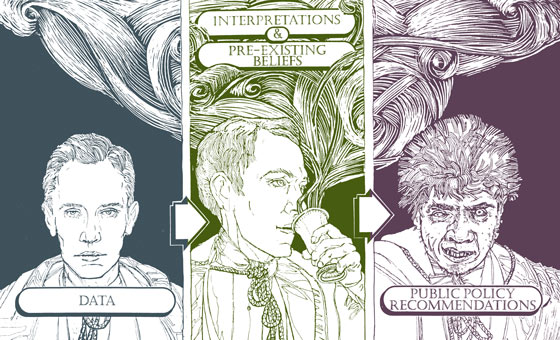
A Note from Michael Shermer, Publisher & Editor, Skeptic magazine
In 1995, Skeptic magazine published one of our most controversial issues in our 25 year history, one dedicated to analyzing the claims of a book by Charles Murray and Richard Herrnstein titled The Bell Curve: Intelligence and Class Structure in American Life. It merits revisiting because of recent events in which Charles Murray has been booed off stage at two academic institutions in March and April of 2017: one at Middlebury College and the other at Villanova University. One of the startling facts to emerge from these recent protests is that both students and professors who were protesting admitted that they had never read any of Murray’s books but that the very idea that there could be group differences in intelligence was anathema and not open for discussion. They didn’t even want to hear Murray’s arguments, much less try to refute them.
This is not our style or philosophy at Skeptic magazine. Here there are no sacred cows, no ideas too hot to touch. It is our belief that truth will win out in the bright light of open discussion, debate, and disputation. Of the many articles in that issue (which you can order online), we reproduce in the next two eSkeptics: one critical of The Bell Curve and the other in defense of the book and its thesis. We have enough respect for our readers that you are smart and wise enough to judge for yourself and without the need for someone else to tell you how to think about a subject.
We begin, today, with the cognitive psychologist Diane Halpern’s critique titled “The Skewed Logic of the Bell-Shaped Curve” (below). Dr. Halpern is one of the world’s leading scientists in the study of cognitive differences, including both race and gender, and she herself has encountered controversy for just daring to study the subject.
In eSkeptic for April 26, 2017, we will republish the late U.C. Berkeley anthropologist Vince Sarich’s article, “In Defense of The Bell Curve: The Reality of Race and the Importance of Human Differences.” Sarich was also a very controversial scientist for his research on race and group differences, from which he never backed down.
The Skewed Logic of the Bell-Shaped Curve
by Diane F. Halpern
As I read The Bell Curve by Richard J. Herrnstein and Charles Murray I was reminded of a cartoon from the popular children’s television show Sesame Street. As regular viewers of Sesame Street already know, every episode is brought to you courtesy of a number and letter. On those days when the star of the show is the letter “I,” we are shown a group of hard-working cartoon characters whose job it is to polish a giant letter “I” until it glistens like an expensive jewel in the sunlight. In fact, this small army of letter polishers spend their entire day polishing the letter “I” because it is such an Important and Interesting letter. In a similar manner, Herrnstein and Murray also polish their “I”—Intelligence—and its related measure, IQ, which assume the spotlight as the best predictors of socioeconomic class and a diverse range of variables that cover the rest of the alphabet from Abusive relationships to Xenophobia and Zealotry.
Commenting on The Bell Curve is a lot like trying to catch a ball of jello. The arguments are slick and, like most skilled rhetoricians who are attempting to change how people think, the authors provide a veneer of fairness to cover the flaws and biases in their message. In this case, the veneer is thin—so thin that it allows their hypocrisy and social agenda to peek through. In making their points, the authors present, discredit, and then dismiss all opposing points of view. Contradictory evidence is criticized as statistically or methodologically flawed. Unfortunately, the stringent criteria that they apply to counterarguments are abandoned when they present the evidence in support of their favored conclusions. The authors shape their arguments like skilled word smiths. A factual statement like “some educational programs have not worked” is gradually morphed into a misleading statement like “educational programs have not worked,” and then, “educational programs cannot work,” a subtle change in wording that occurs as the authors stray from their data.
Can anyone seriously believe that Murray was shocked and dismayed when he found that he had upset many people with his pronouncements of racial inequality or the way he used IQ data to support an ultra-conservative political agenda? The authors have created the perfect medium for a growing media frenzy with a very long book in which much of the supporting evidence is relegated to a statistical appendix and extreme claims are succinctly summarized. The voracious appetite of the media is whetted by controversies, sound bites, and simple explanations of complex subjects. Even lengthy and thoughtful articles are condensed into a few words for newspaper headlines that are supposed to pique the reader’s interest. This is the stuff that sells newspapers, keeps people tuned to the chatty banter that passes as television news, and sustains conversations in countless barber shops, bus stops, and kitchen tables. Despite Murray’s protestations to the contrary, this is a book about race, and race is one topic in which we are all self-proclaimed experts. Each of us has an opinion about racial similarities and differences and a story to tell that shows how right our own opinions are. Cognitive psychologists who study stereotypes and prejudice have known for a long time that strongly held beliefs are difficult to change, and that people cling to their beliefs even when confronted with evidence that shows that these beliefs are wrong. We are more likely to change our interpretations of experience and our memory for events so that they fit our existing belief system than we are to abandon our beliefs. Perhaps books like this one should be sold with warning labels in which readers are urged to be alert for misleading statements, missing evidence, and biased interpretations—sort of a surgeon general’s warning. The messages in The Bell Curve are at least as dangerous as cigarettes and alcohol. […]
What Really Happened to Jesus?
I was deeply disappointed that PBS chose to air the documentary film, The Last Days of Jesus, which was more suited to the spurious sensationalism of the so-called History Channel than the high quality we’ve come to expect from public television. Among other problems with this program was its lack of any sort of objectivity. It supports an elaborate conspiracy theory for which there is virtually no serious supporting data. In airing this film PBS gave tacit support of and lent respectability to what is essentially a fringe theory advanced by Simcha Jacobovici and James Tabor.
Among the many problems with this show and the theory it expounds is that it portrays John the Baptist and Jesus as cousins involved in a plot to make John a High Priest and Jesus a Davidic king. Yet, it is only in the Gospel of Luke that they are represented as cousins. In Matthew 11:2–3 the gospel writer has John, while in prison, send two of his disciples to ask of Jesus, “Are you he who should come, or shall we look for another?” This is a rather odd question for John the Baptist to ask Jesus if he and Jesus were cousins and involved together in a revolutionary plot. It is also interesting to note that Josephus, who devotes a long paragraph to John the Baptist, does not mention Jesus in conjunction with John and, in fact, only alludes to Jesus indirectly in reference to the execution of James, who he characterizes as, “the brother of Jesus, who was called the Christ” (Antiquities of the Jews, Book 20, chapter 9, item 1).
Tabor and Jacobovici also seem to be ignorant of what Josephus had to say about the reason why Herod Antipas executed John. Instead, they base their account on Mark 6, the story of Salome, daughter of Herodias, dancing for Herod Antipas on his birthday and him offering her anything she wanted and her asking for the head of John the Baptist. This is a fictional story trope known as “the rash vow,” in which a central character makes an excessive vow that results in someone’s death. It is known from the story of Jephthah having to sacrifice his daughter (Judges 11:30–40), Saul vowing death to anyone in his army who tasted food before evening and nearly having to sacrifice his son Jonathan (1 Samuel 14:24–45), and in classical mythology from the story of Idomeneus having to lose the kingship of Crete when he fails to CONTINUE READING THIS POST…
TAGS: Bible, Jesus, mythologyeSkeptic for April 12, 2017
In this week’s eSkeptic:
Click the play button above to watch.
MICHAEL SHERMER BLOG
Michael Shermer Slams Conservative Dennis Prager’s Attack On Atheism
Michael Shermer is striking back against the attack on atheism made by conservative radio talk show host Dennis Prager, in the recent video ‘If There Is No God, Murder Isn’t Wrong’.
In the PragerU video, Prager claims that without God, all morality is mere opinion—and therefore murder isn’t wrong. He begins by asking viewers: “I’m sure you think murder is wrong, but how do you know?”
In a video response called ‘If There is No God, is Murder Wrong?’, Shermer—a well-known atheist and former evangelical Christian—tackles Prager’s simplistic assessment of religion and morality… Continue reading the press release for this video.
The Enfield Poltergeist — Part 2
MONSTERTALK EPISODE 126
Part 2 of our look at the Enfield Poltergeist brings together interviews with Chris French (@ChrisCFrench), Joe Nickell (@RealJoeNickell) and Deborah Hyde (@jourdemayne). We look at why skeptics tend to be so reluctant to accept the existence of poltergeists.
Get the MonsterTalk Podcast App and enjoy the science show about monsters on your handheld devices! Available for iOS, Android, and Windows devices. Subscribe to MonsterTalk for free on iTunes. Follow the RSS feed.

In this week’s eSkeptic, Tim Callahan reviews the documentary film The Last Days of Jesus, produced by Blink Films, Associated Producers Ltd., PBS, Channel Five Television, LTD., SBS Television Australia and ZoomerMedia Limited. Aired on PBS affiliates in the U.S. April 4, 2017.
What Really Happened to Jesus?
by Tim Callahan
I was deeply disappointed that PBS chose to air the documentary film, The Last Days of Jesus, which was more suited to the spurious sensationalism of the so-called History Channel than the high quality we’ve come to expect from public television. Among other problems with this program was its lack of any sort of objectivity. It supports an elaborate conspiracy theory for which there is virtually no serious supporting data. In airing this film PBS gave tacit support of and lent respectability to what is essentially a fringe theory advanced by Simcha Jacobovici and James Tabor.

Professor James D. Tabor at the Olive Tree Park. Blink Films/AP Last Days © 2017
Among the many problems with this show and the theory it expounds is that it portrays John the Baptist and Jesus as cousins involved in a plot to make John a High Priest and Jesus a Davidic king. Yet, it is only in the Gospel of Luke that they are represented as cousins. In Matthew 11:2–3 the gospel writer has John, while in prison, send two of his disciples to ask of Jesus, “Are you he who should come, or shall we look for another?” This is a rather odd question for John the Baptist to ask Jesus if he and Jesus were cousins and involved together in a revolutionary plot. It is also interesting to note that Josephus, who devotes a long paragraph to John the Baptist, does not mention Jesus in conjunction with John and, in fact, only alludes to Jesus indirectly in reference to the execution of James, who he characterizes as, “the brother of Jesus, who was called the Christ” (Antiquities of the Jews, Book 20, chapter 9, item 1).
Tabor and Jacobovici also seem to be ignorant of what Josephus had to say about the reason why Herod Antipas executed John. Instead, they base their account on Mark 6, the story of Salome, daughter of Herodias, dancing for Herod Antipas on his birthday and him offering her anything she wanted and her asking for the head of John the Baptist. This is a fictional story trope known as “the rash vow,” in which a central character makes an excessive vow that results in someone’s death. It is known from the story of Jephthah having to sacrifice his daughter (Judges 11:30–40), Saul vowing death to anyone in his army who tasted food before evening and nearly having to sacrifice his son Jonathan (1 Samuel 14:24–45), and in classical mythology from the story of Idomeneus having to lose the kingship of Crete when he fails to sacrifice his own son according to his vow, similar to that of Jephthah. […]
SCIENCE SALON # 11: APRIL 23
Dr. Andrew Shtulman — Scienceblind: Why Our Intuitive Theories About the World Are So Often Wrong

Photo by Max S. Gerber
Why do we catch colds? What causes seasons to change? And if you fire a bullet from a gun and drop one from your hand, which bullet hits the ground first? In a pinch we almost always get these questions wrong. Worse, we regularly misconstrue fundamental qualities of the world around us. So, how do we get the world right? Find out in this Science Salon!
The Baloney Detection Kit Sandwich (Infographic)
For a class project, a pair of 11th grade physics students created the infographic shown below, inspired by Michael Shermer’s Baloney Detection Kit: a 16-page booklet designed to hone your critical thinking skills. It includes suggestions on what questions to ask, what traps to avoid, specific examples of how the scientific method is used to test pseudoscience and paranormal claims, and a how-to guide for developing a class in critical thinking.
Click to enlarge and scroll
eSkeptic for April 5, 2017
In this week’s eSkeptic:
SCIENCE SALON # 11: APRIL 23
Dr. Andrew Shtulman — Scienceblind: Why Our Intuitive Theories About the World Are So Often Wrong

Photo by Max S. Gerber
Why do we catch colds? What causes seasons to change? And if you fire a bullet from a gun and drop one from your hand, which bullet hits the ground first? In a pinch we almost always get these questions wrong. Worse, we regularly misconstrue fundamental qualities of the world around us. So, how do we get the world right? Find out in this Science Salon!

SCIENTIFIC AMERICAN “SKEPTIC” COLUMN FOR APRIL 2017
What is Truth, Anyway? How to think about claims, even the Resurrection
According to the Oxford English Dictionary’ s first definition, a “skeptic” is “one who holds that there are no adequate grounds for certainty as to the truth of any proposition whatever.” This is too nihilistic. There are many propositions for which we have adequate grounds for certainty as to their truth:
There are 84 pages in this issue of Scientific American. True by observation.

Dinosaurs went extinct around 65 million years ago. True by verification and replication of radiometric dating techniques for volcanic eruptions above and below dinosaur fossils.
The universe began with a big bang. True by a convergence of evidence from a wide range of phenomena, such as the cosmic microwave background, the abundance of light elements (such as hydrogen and helium), the distribution of galaxies, the large-scale structure of the cosmos, the redshift of most galaxies and the expansion of space.
These propositions are “true” in the sense that the evidence is so substantial that it would be unreasonable to withhold one’s provisional assent. It is not impossible that the dinosaurs died a few thousand years ago (with the universe itself having been created 10,000 years ago), as Young Earth creationists believe, but it is so unlikely we need not waste our time considering it.
Man’s Best Fiend
MONSTERTALK EPISODE 125
In this episode of MonsterTalk, we are joined by folklorist and author Mark Norman to discuss legends of black hounds. Mark is the author of Black Dog Folklore as well as the host of The Folklore Podcast. This is a special cross-over episode with The Folklore Podcast and contains a slightly different edit of the interview audio. Discussion ranges from the legends of dark hounds in European folklore, to the nature of the academic study of folklore.
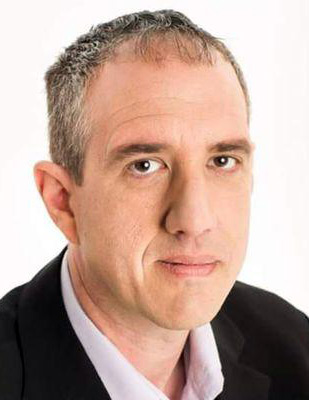
Mark Norman
Get the MonsterTalk Podcast App and enjoy the science show about monsters on your handheld devices! Available for iOS, Android, and Windows devices. Subscribe to MonsterTalk for free on iTunes. Follow the RSS feed.
eSkeptic for March 29, 2017
In this week’s eSkeptic:

MICHAEL SHERMER BLOG
Science for All
On 22 March, 2017 I posted on my Twitter account (@michaelshermer) a link to this article titled “Science march on Washington, billed as historic, plagued by organizational turmoil,” which chronicled the “infighting among organizers, attacks from outside scientists who don’t feel their interests are fairly represented, and operational disputes.” The article went on to note that “Tensions have become so pronounced that some organizers have quit and many scientists have pledged not to attend.” Predictably, politics was the divisive element, most notably identity politics involving the proper representation of race and gender diversity, and immigration, obviously in response to the election of Donald Trump. The website of the march felt the need to post an official diversity policy that reads, in part, “We acknowledge that society and scientific institutions often fail to include and value the contributions of scientists from underrepresented groups.”
My initial thought was this: So let me get this straight. As the Federal government prepares to cut science budgets across the board, and in an era of fake news and alternative facts, instead of marching to proclaim how important science is to the American economy, not to mention human survival and flourishing, along with our commitment to facts and reason, you want to send a message to the public in general and the Trump administration in particular that science—the most universal institution in human history—is a failure when it comes to diversity and inclusion? […]

Mike Keller (center) pictured with Gareth Edwards (left), Director Godzilla 2014, and Max Borenstein (right), screenplay Kong: Skull Island
Crush, Crumble and Chomp
MONSTERTALK EPISODE 124
This MonsterTalk is another special literary/pop-culture episode as we take on the biggest topic in monsters: Giant City-Destroying Kaiju! Guests are Ed Godziszewski author of Ishiro Honda: A Life in Film, from Godzilla to Kurosawa (Oct 2017) and Michael Keller, co-author (with Edward Holland) of the magazine Monster Attack Team and the upcoming podcast Area 42.
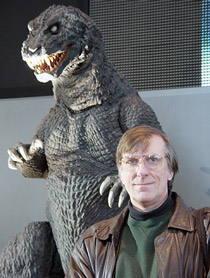
Ed Godziszewski (right) pictured with Godzilla, King of the Monsters (left)
Get the MonsterTalk Podcast App and enjoy the science show about monsters on your handheld devices! Available for iOS, Android, and Windows devices. Subscribe to MonsterTalk for free on iTunes. Follow the RSS feed.
Dying To Go To Heaven
What the Heaven’s Gate Suicides Teach Us About Islamic Martyrdom
by Michael Shermer
It was 20 years ago this week, March 20-26, 1997, that 39 members of the Heaven’s Gate cult “graduated” from this life to ascend to the UFO mothership that they believed would take them to an extraterrestrial paradise. I’ll never forget it. I was on book tour for Why People Believe Weird Things, and neither I nor any of my peers who study belief systems had ever heard of the cult. It was hard to fathom. Now, as I look back 20 years later, I believe the mass suicide has a deeper lesson that goes far beyond the confines of New Age fringe cults, and has relevance to understanding the motivations of today’s suicide terrorists.
But first, let’s revisit the story. Heaven’s Gate was founded in 1975 by Marshall Applewhite and Bonnie Nettles after they met in a psychiatric hospital. They fell in love and believed their pairing had been foretold by extraterrestrials. In the 1980s and 1990s, they recruited several hundred followers, many of whom sold their possessions and lived in isolation, disconnected from their family and friends. They practiced living in dark rooms to simulate space travel and considered sex sinful, with six male members voluntarily undergoing castration.
In early 1997, the appearance of Comet Hale-Bopp foretold to them that the coming of the UFO mothership, said to be hiding behind the comet, that would take them to what they called The Evolutionary Level Above Human (TELAH), where they would live forever in unadulterated ecstasy. This story was reinforced by Art Bell, on his popular late-night radio show Coast to Coast AM, a purveyor of conspiratorial “alternative facts” (before they were known as such). Compared to eternal bliss in this extraterrestrial heaven, life on Earth was but a temporary stage in evolution. The transition was made in three waves that week, as members drank a deadly cocktail of phenobarbital, applesauce, and vodka; also pulling plastic bags over their heads for self-asphyxiation. Authorities found them all dead in a San Diego home on March 26. The event became a media circus. […]
SCIENCE SALON # 11: APRIL 23
Scienceblind: Why Our Intuitive Theories About the World Are So Often Wrong
Why do we catch colds? What causes seasons to change? And if you fire a bullet from a gun and drop one from your hand, which bullet hits the ground first? In a pinch we almost always get these questions wrong. Worse, we regularly misconstrue fundamental qualities of the world around us. In Scienceblind, cognitive and developmental psychologist Dr. Andrew Shtulman, a professor of psychology and cognitive science at Occidental College, where he directs the Thinking Lab, shows that the root of our misconceptions lies in the theories about the world we develop as children. They’re not only wrong, they close our minds to ideas inconsistent with them, making us unable to learn science later in life.
So how do we get the world right? We must dismantle our intuitive theories and rebuild our knowledge from its foundations. The reward won’t just be a truer picture of the world, but clearer solutions to many controversies—around vaccines, climate change, or evolution—that plague our politics today.
Order Scienceblind: Why Our Intuitive Theories About the World Are So Often Wrong from Amazon.
Call 1-626-794-3119 now to reserve.
eSkeptic for March 22, 2017
In this week’s eSkeptic:
MEDIA
Michael Shermer Sizzle Reel
See clips from Dr. Michael Shermer’s most noted media appearances including: twice on the Colbert Report, Larry King Live with UFOlogists, CNN, and other news shows debating creationists and Intelligent Design advocates, and other highlights from his 25 year career as a public intellectual.

Are abused children doomed to repeat the crimes of their abusers? In this week’s eSkeptic, Carol Tavris examines our intuition about the “cycle of abuse.” This column was originally published in Skeptic magazine 21.2 (2016).
How Accurate is the “Cycle of Abuse”?
by Carol Tavris
Many years ago, as I was sitting in a courtroom waiting to testify as an expert witness in a case involving junk psychology, I observed a child custody case ahead of ours. A social worker was arguing that the mother in question should not be granted custody of her children, full or even shared. True, the mother had never hit or otherwise physically abused them; but, said the social worker with certainty, the mother had herself been abused as a child and it was virtually certain that she would in the future repeat the crimes of her parents. Psychologists have called this common idea the “cycle of abuse.” It seems to affirm our intuitions that abused children would grow up to become abusive parents themselves, given that all children imitate so much of what they observe at home. But new evidence shows that once again our intuitions have led us astray.
Most people take it for granted that the path from childhood to adulthood is a fairly straight one. We think of the embedded attitudes, habits, and values our parents taught us—some of which we are still trying to eradicate. Many people, as legions of memoirists remind us, carry with them the psychological scars of wounds they suffered at the hands of cruel, violent, alcoholic, unloving or neglectful parents. Longitudinal studies repeatedly find that children abused in these ways are more likely than other children to develop emotional problems, become violent or depressed, attempt suicide, commit crimes, drop out of school, and develop chronic stress-related illnesses. Adults imprisoned for violent acts and child abuse report high rates of their own victimization as children.
The belief in a cycle of violence was clinically popular but empirically unsupported, emerging from accounts by psychotherapists and social workers whose perspective was understandably onesided…
Yet…what is missing from this picture? The group we don’t see: children who were abused but who proved to be resilient, growing into healthy adults determined not to revisit on their own children what they had suffered. We aren’t aware of them because they aren’t in therapy or prison, telling their stories to sympathetic listeners and researchers. I once had a brilliant freshman student who described his life as typical of a “kid in a bad novel”— a family destroyed by drugs, violence, and chaos. “What saved you?” I asked. “Math teacher in high school,” he said. “He thought I was smart. Showed me I was. He got me into this university.” […]
How Accurate is the “Cycle of Abuse”?
Many years ago, as I was sitting in a courtroom waiting to testify as an expert witness in a case involving junk psychology, I observed a child custody case ahead of ours. A social worker was arguing that the mother in question should not be granted custody of her children, full or even shared. True, the mother had never hit or otherwise physically abused them; but, said the social worker with certainty, the mother had herself been abused as a child and it was virtually certain that she would in the future repeat the crimes of her parents. Psychologists have called this common idea the “cycle of abuse.” It seems to affirm our intuitions that abused children would grow up to become abusive parents themselves, given that all children imitate so much of what they observe at home. But new evidence shows that once again our intuitions have led us astray.
Most people take it for granted that the path from childhood to adulthood is a fairly straight one. We think of the embedded attitudes, habits, and values our parents taught us—some of which we are still trying to eradicate. Many people, as legions of memoirists remind us, carry with them the psychological scars of wounds they suffered at the hands of cruel, violent, alcoholic, unloving or neglectful parents. Longitudinal studies repeatedly find that children abused in these ways are more likely than other children to develop emotional problems, become violent or depressed, attempt suicide, commit crimes, drop out of school, and develop chronic stress-related illnesses. Adults imprisoned for violent acts and child abuse report high rates of their own victimization as children.
The belief in a cycle of violence was clinically popular but empirically unsupported, emerging from accounts by psychotherapists and social workers whose perspective was understandably onesided…
Yet…what is missing from this picture? The group we don’t see: children who were abused but who proved to be resilient, growing into healthy adults determined not to revisit on their own children what they had suffered. We aren’t aware of them because they aren’t in therapy or prison, telling their stories to sympathetic listeners and researchers. I once had a brilliant freshman student who described his life as CONTINUE READING THIS POST…
TAGS: abuse, behavioral psychology, causal inference, nature versus nurtureWhat is Sexual Orientation?
If you want to study sexual behavior, choose the fruit fly. Its behavior is not nearly as obvious as you might think, and you aren’t likely to raise a storm of protest from opponents of sex research or from advocates of the fruit fly.
If you want to study human sexuality, though, watch out. Just about every aspect of sexuality evokes powerful beliefs and prejudices, causing people to scrutinize research findings through the prisms of their own sexual behavior, their political and social ideologies, and wishful thinking. Add to this Congress’s antediluvian attitudes toward sex and sex research (Congress apparently acts on the theory that “if we don’t study it, no one will do it”), and no wonder it’s so difficult for science and skepticism to even get their foot in the bedroom door. And if your interest is sexual orientation —its causes, expression, variations, development— you’ll have to steer a course between the Scylla of conservatives who know that same-sex orientation is a sinful, psychologically determined “life-style choice” and the Charybdis of liberals who know that it is biologically determined and no more “chosen” than eye color.
The view that sexual orientation is biologically determined through the action of genes or hormones was an important weapon in the struggle for gay and lesbian rights. But what if it’s more complicated than that? What if that causal dichotomy (“biological v. learned”) is oversimplified? And so what, anyway? If sexual orientation proves to be far more complex and varied than we thought, why should that have anything at all do with extending rights to any group? If a person wants to be mono-sexual, bisexual, or, hell, trisexual, whose business is it? As the great screenwriter William Goldman famously said about filmmaking in Hollywood, “nobody knows anything.” When it comes to understanding sexual orientation, that’s a pretty close assessment. Consider this fascinating array of controversies and findings:
Is sexual orientation a matter of categories—straight, gay, bi—or is it a continuum?
Eminent sexologists differ. In their extensive review of the research for the eminent journal Psychological Science in the Public Interest, J. Michael Bailey and his colleagues argue for the category view.1 But sexologist Ritch Savin- Williams holds with Alfred Kinsey’s original assertion that “Males do not represent two distinct populations, heterosexual and homosexual. The world is not to be divided into sheep and goats.” Savin-Williams, drawing on a study of some 71,000 men and 118,000 women, argues for a five-point continuum that includes CONTINUE READING THIS POST…
TAGS: behavioral psychology, homosexuality, nature versus nurture, sexual orientation, sexuality
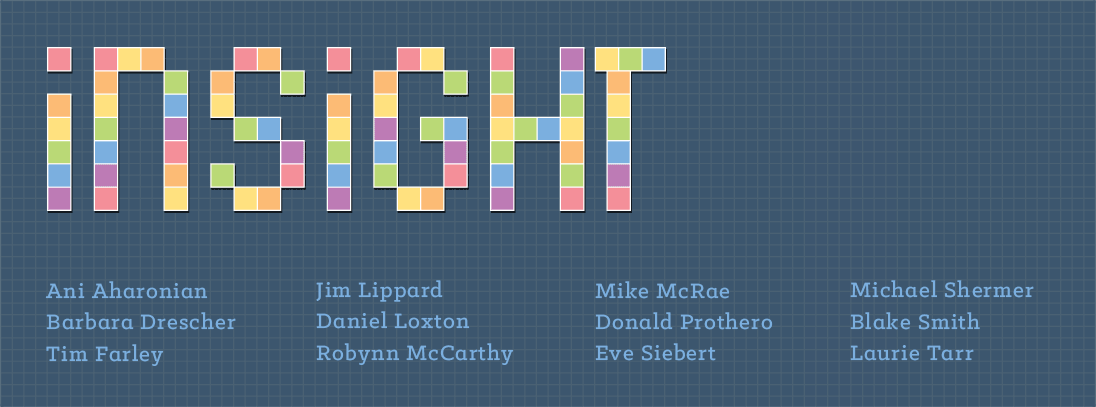
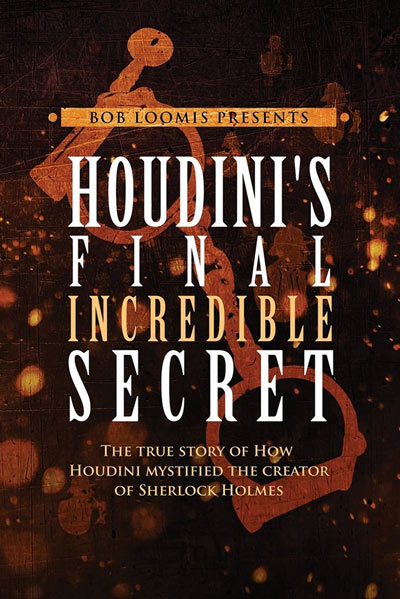

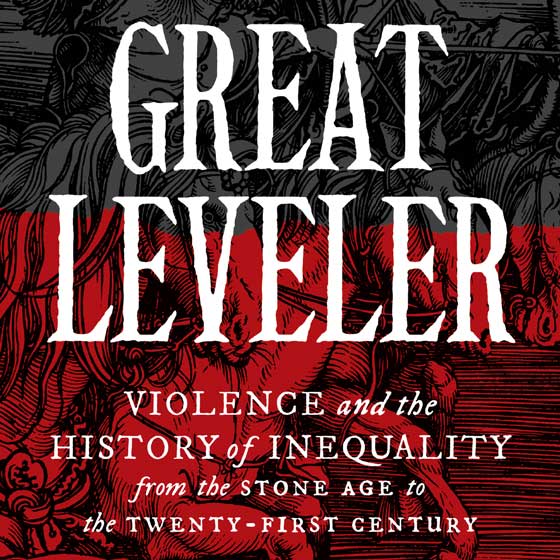





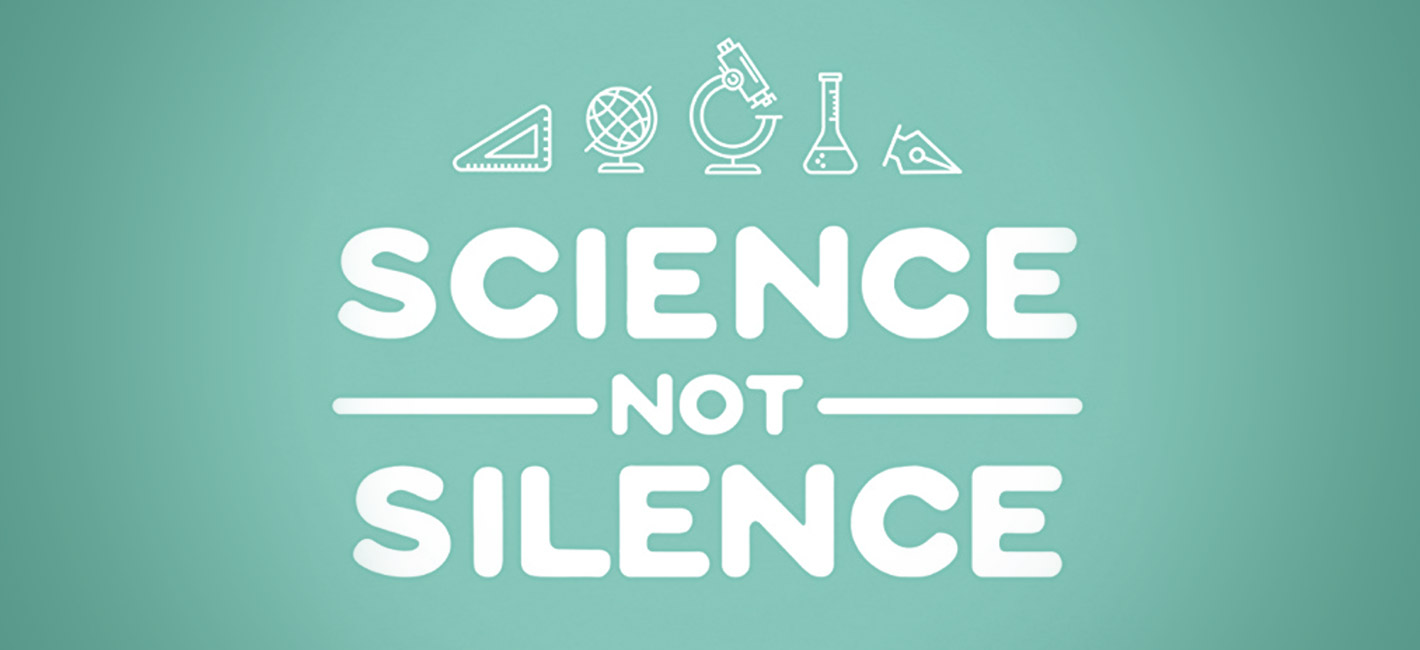
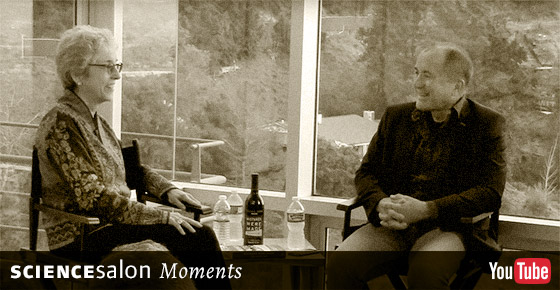

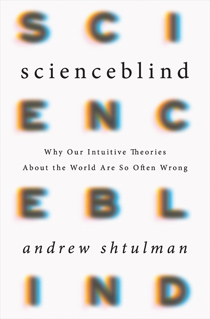


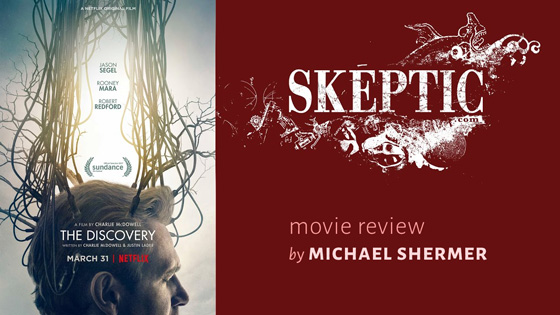
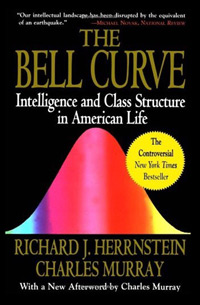




![An image of Marshall Applewhite during a video broadcast produced by Heaven's Gate (religious group) [https://en.wikipedia.org/wiki/File:Marshall_Applewhite.jpg]](https://www.skeptic.com/eskeptic/2017/images/17-03-29/Marshall_Applewhite.jpg)
